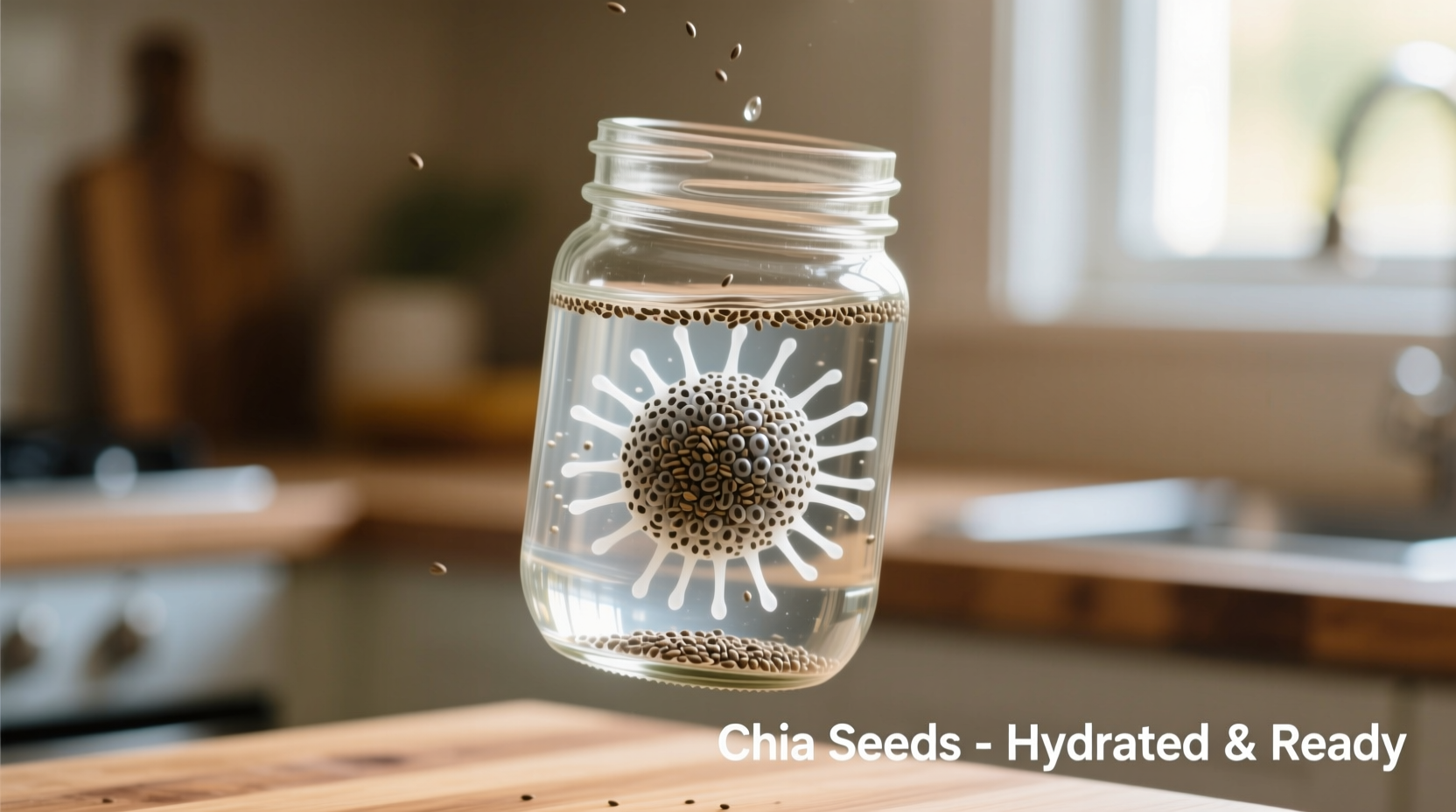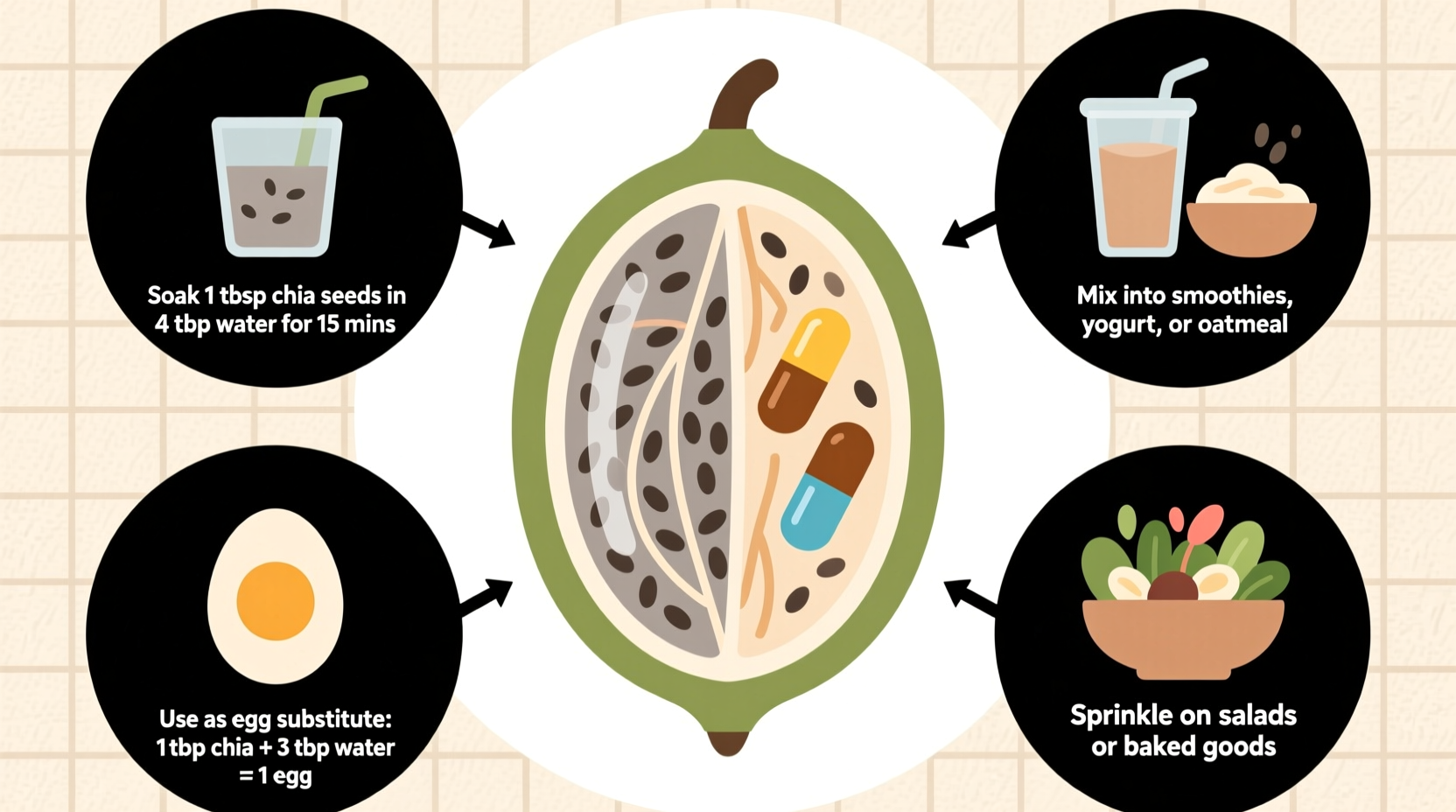Chia seeds can be used by mixing 1 part seeds with 3 parts liquid and letting them soak for 15-30 minutes to form a gel, adding them directly to smoothies, yogurt, or oatmeal, or using them as an egg substitute (1 tbsp chia seeds + 3 tbsp water = 1 egg). For optimal nutrition and digestion, always consume them hydrated rather than dry.
Discover exactly how to use chia seeds to enhance your daily meals with these science-backed methods that maximize their nutritional benefits while avoiding common pitfalls. Whether you're looking to boost fiber intake, find vegan binding alternatives, or simply add nutrient density to your diet, these practical techniques work for beginners and experienced cooks alike.
Why Chia Seeds Deserve a Place in Your Pantry
Originating from the Salvia hispanica plant native to Central and South America, chia seeds have been valued since Aztec and Mayan civilizations for their endurance-boosting properties. Modern research confirms their impressive nutritional profile: just one ounce (28g) delivers 11g of fiber, 4.4g of protein, and significant amounts of omega-3 fatty acids, calcium, and magnesium. According to USDA FoodData Central, chia seeds contain more fiber per serving than most whole grains and provide complete plant-based protein with all nine essential amino acids.
| Preparation Method | Seed-to-Liquid Ratio | Soaking Time | Best For |
|---|---|---|---|
| Basic Gel | 1:3 | 15-30 min | Smoothies, sauces |
| Overnight Soak | 1:4 | 2-4 hours | Oatmeal, pudding |
| Egg Substitute | 1 tbsp:3 tbsp | 5-10 min | Baking, binding |
| Dry Sprinkle | N/A | None | Salads, finished dishes |
The Essential Preparation Techniques
Understanding the science behind chia seed hydration is crucial for optimal results. When chia seeds contact liquid, they absorb up to 12 times their weight, forming a gel-like coating through hydrophilic polymers. This process not only improves digestibility but also slows carbohydrate absorption, preventing blood sugar spikes. The Academy of Nutrition and Dietetics recommends always consuming chia seeds hydrated rather than dry to avoid potential esophageal blockage and maximize nutrient absorption.
Perfecting the Basic Chia Gel
The foundation of most chia applications is the simple chia gel. Combine one tablespoon of chia seeds with three tablespoons of water or milk alternative in a small jar. Shake vigorously for 30 seconds, then let sit for 15 minutes, shaking occasionally. For thicker consistency (ideal for pudding), use a 1:4 ratio and refrigerate for 2-4 hours. This method activates the seeds' soluble fiber, making nutrients more bioavailable while creating the perfect texture for incorporation into other dishes.

Daily Integration Strategies
Start your morning with chia-enhanced nutrition by stirring one tablespoon of pre-soaked chia seeds into your oatmeal during the last minute of cooking. The heat helps the seeds integrate seamlessly while adding creaminess without dairy. For smoothie perfection, add chia gel during blending rather than dry seeds to prevent clumping and ensure even distribution. Registered dietitians at Harvard T.H. Chan School of Public Health note that consuming chia seeds with vitamin C-rich foods like citrus or berries significantly enhances iron absorption from the seeds.
Smart Hydration Hacks
Create nutrient-boosted beverages by adding chia gel to lemon water, iced tea, or coconut water. For a refreshing summer drink, prepare chia fresca by combining chia gel with fresh lime juice, a touch of honey, and filtered water. Let the mixture sit for 10 minutes to allow the chia to fully hydrate before drinking. This traditional Mexican beverage provides sustained energy without sugar crashes, making it ideal for pre-workout hydration.
Advanced Culinary Applications
Professional chefs rely on chia seeds' binding properties as a reliable vegan egg substitute. To replace one egg, mix one tablespoon of chia seeds with three tablespoons of water and let sit for 5-10 minutes until thickened. This works particularly well in muffins, pancakes, and veggie burgers where the seeds' mild flavor won't interfere. For gluten-free baking, adding one tablespoon of chia seeds per cup of flour improves structure and moisture retention without altering flavor.
Texture Transformation Techniques
Understanding how chia seeds affect texture is key to successful cooking. When added to sauces and dressings, they create natural thickening without altering flavor. For creamy salad dressings, blend 1.5 tablespoons of chia gel with vinegar, mustard, and herbs. In soups and stews, stir in chia gel during the last 10 minutes of cooking to add body and nutrition. Note that chia seeds lose their gelling properties in highly acidic environments, so add them after cooking when preparing tomato-based dishes.
Contextual Considerations and Limitations
While chia seeds offer numerous benefits, certain considerations ensure safe and effective use. The European Food Safety Authority recommends limiting daily intake to 15g (about 1.5 tablespoons) for adults due to their high fiber content, which can cause digestive discomfort when introduced too quickly. Individuals taking blood thinners should consult their healthcare provider before regular consumption, as chia seeds' omega-3 content may enhance medication effects. Never consume dry chia seeds without adequate liquid, as documented cases show potential for esophageal obstruction when they absorb moisture in the throat.
Troubleshooting Common Issues
Clumping is the most frequent problem when using chia seeds. Prevent this by always mixing seeds with liquid gradually while whisking continuously. If your chia pudding sets too firmly, whisk in additional liquid until desired consistency is reached. For baking applications where visible seeds are undesirable, grind chia seeds in a coffee grinder before use, though note this reduces their gelling capacity. When using chia as an egg substitute in delicate recipes like custards, combine with additional binding agents like flaxseed for optimal results.
Your Action Plan for Success
Begin incorporating chia seeds with one simple method: add one tablespoon of pre-soaked chia seeds to your morning smoothie or yogurt. After one week, introduce a second application method, such as using chia gel in salad dressings. Within 30 days, you'll have seamlessly integrated these nutritional powerhouses into multiple meals without significant routine disruption. Remember that consistency matters more than quantity—small daily additions provide cumulative benefits without overwhelming your system.











 浙公网安备
33010002000092号
浙公网安备
33010002000092号 浙B2-20120091-4
浙B2-20120091-4